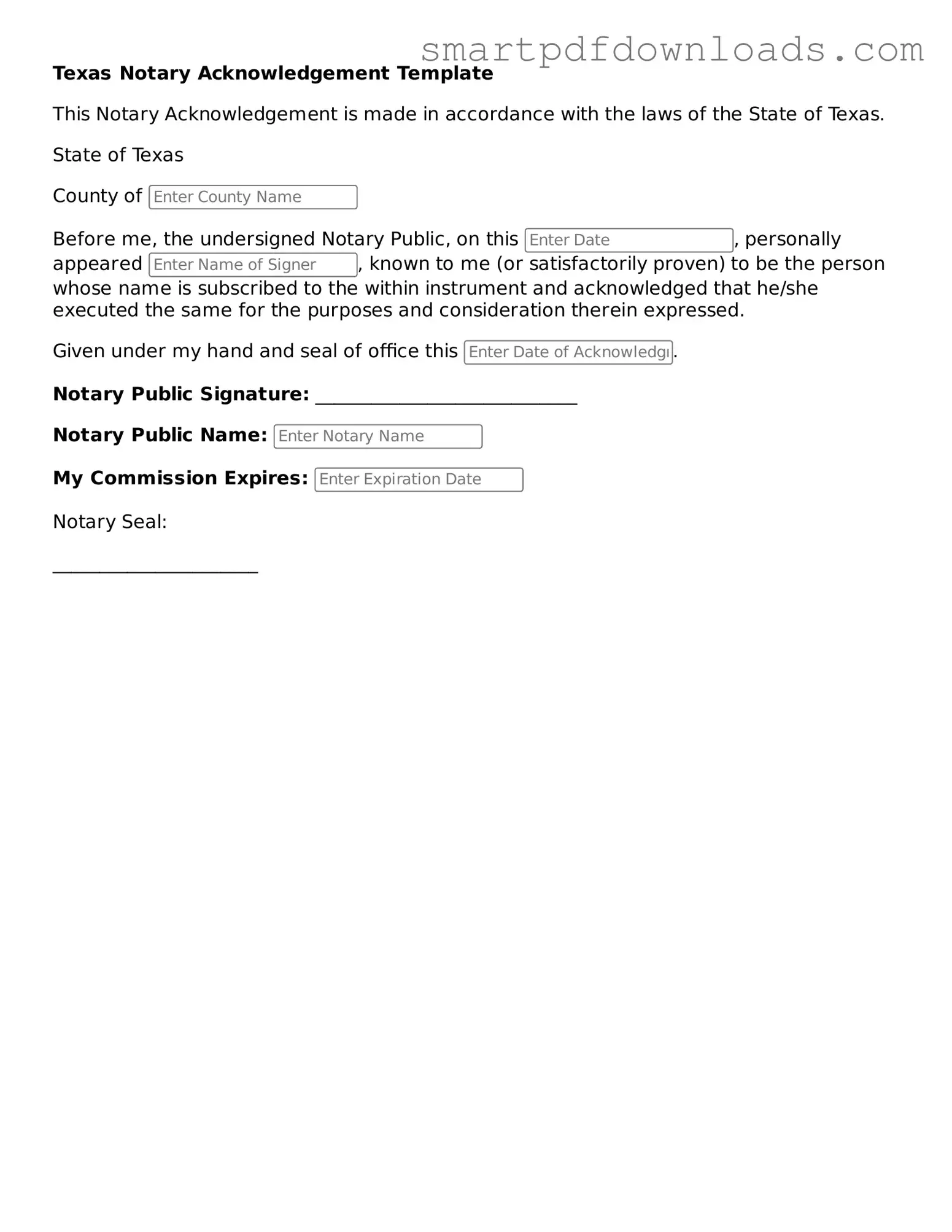Legal Notary Acknowledgement Form for the State of Texas
The Texas Notary Acknowledgment form is a legal document used to confirm that a signer has willingly signed a document in the presence of a notary public. This form serves as proof that the notary has verified the identity of the signer and witnessed the signing process. Understanding this form is essential for anyone involved in legal transactions in Texas.
Edit Notary Acknowledgement Online
